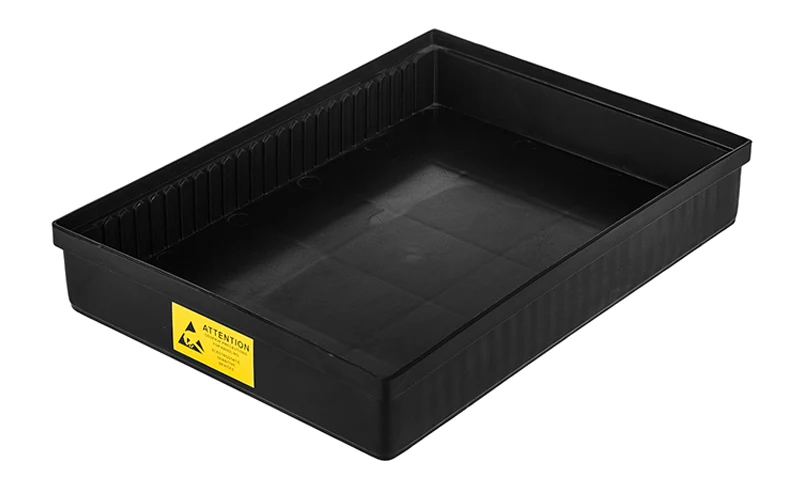Why is ESD Tray the Unsung Hero in Your Electronics Production Line?
2025-11-20
In our daily operations at Dongguan Xin Lida Anti-Static Products Co., Ltd., we consistently observe a critical challenge faced by the electronics industry: the invisible threat of Electrostatic Discharge (ESD). This is where my team and I emphasize the indispensable role of the ESD Tray. As a fundamental component in electrostatic protection, an ESD Tray is specifically designed to safely store, handle, and transport sensitive electronic components and assemblies. Its primary mission is to prevent ESD events that can cause latent or catastrophic failures in devices like integrated circuits, printed circuit boards (PCBs), and other microelectronics. In my experience, neglecting this simple tool can lead to significant financial losses and quality issues. I firmly believe that integrating a reliable ESD Tray into your workflow is not just a precaution; it's a strategic necessity for ensuring product integrity and reliability from our factory to your facility.
What Exactly Does an ESD Tray Do?
The core function of an ESD Tray is to provide a shielded environment for electronics. It acts as a Faraday cage, dissipating any static charges away from the sensitive components placed inside it. This prevents static buildup from personnel, equipment, or other surfaces from damaging the products. We design our trays to offer both surface resistance for charge dissipation and volume resistance for shielding.
Here are the primary actions an ESD Tray performs:
-
Physical Protection: It safeguards components from physical damage like scratches, impacts, and contamination during handling and logistics.
-
Static Dissipation: It safely drains any static charges, preventing sudden discharges.
-
Shielding: It provides a barrier against external electrostatic fields.
-
Organization and Workflow Efficiency: It allows for the systematic arrangement of parts, streamlining the assembly and kitting processes on our production lines and yours.
The Tangible Benefits: What Results Can You Expect?
After implementing our high-quality ESD Trays, our clients, and we ourselves, have witnessed remarkable improvements. We saw a dramatic reduction in ESD-related field failures, which enhanced our brand's reputation for quality. Furthermore, the organized nature of these trays streamlined our assembly process, reducing handling time and minimizing misplaced components. The initial investment in a proper ESD Tray system pays for itself many times over by slashing costly rework and scrap rates.
FAQ 1:
-
Q: Our factory floor uses standard plastic trays. Why should I switch to a specialized ESD Tray?
-
A: Standard plastics are often insulative and can generate and hold significant static charges. A specialized ESD Tray is made from conductive or dissipative materials that actively control and neutralize this static, providing a safe harbor for your sensitive electronics that standard trays simply cannot offer.
Why is Using an ESD Tray Non-Negotiable for Quality?
The importance of the ESD Tray transcends mere functionality; it is a cornerstone of a robust ESD Protective Area (EPA). In today's world, where electronic components are becoming increasingly miniaturized and sensitive, the margin for error is virtually zero. An ESD event that is too faint for a human to feel can instantly destroy a modern chip. Therefore, using an ESD Tray is a critical step in a holistic ESD control program, ensuring that your products meet the highest quality and reliability standards expected by your end customers. It is our first line of defense in my quality assurance protocol.
FAQ 2:
-
Q: How long can I reliably use an ESD Tray before it needs replacement?
-
A: The service life depends on the material and the rigor of its use. However, with proper care—avoiding abrasive cleaners and physical abuse—our ESD Trays are designed for long-term use. We recommend regular testing according to ANSI/ESD S20.20 standards to verify their ongoing performance. We can provide the necessary test equipment and guidance.
Our ESD Tray Solutions: A Partnership in Protection
At Dongguan Xin Lida, we don't just sell ESD Trays; we provide tailored electrostatic protection solutions. Our trays are available in various materials, sizes, and configurations to meet your specific needs. We understand that every component and every process is unique, which is why my team is dedicated to helping you select the perfect tray.
Below is a quick overview of our primary ESD Tray material options:
| Material Type | Key Characteristics | Ideal Use Cases |
|---|---|---|
| Conductive Polypropylene (PP) | Low surface resistance, excellent for rapid charge drainage. | High-speed automated handling, grounding is crucial. |
| Dissipative Polyethylene (PE) | Medium surface resistance, controls static decay safely. | General-purpose handling of PCBs and ICs. |
| Carbon-Loaded ABS | Rigid and durable, offers good structural integrity and shielding. | Heavy components, demanding environments requiring physical robustness. |
FAQ 3:
-
Q: Can you create custom-sized ESD Trays for our unique components?
-
A: Absolutely! We specialize in custom molding. If our standard sizes do not fit your application, our engineering team can work with you to design and manufacture a custom ESD Tray that perfectly cradles your specific components, ensuring maximum protection and efficiency.
Protecting your electronic investments is our top priority. Let us help you fortify your production line against electrostatic damage. For more information, to request samples, or to discuss a custom solution, please do not hesitate to contact us.
Contact Dongguan Xin Lida Anti-Static Products Co., Ltd. today to secure your electronics' future!



